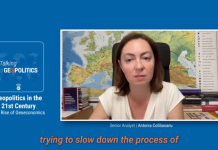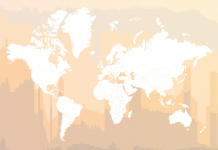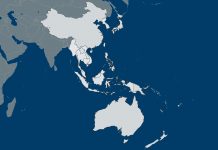A few weeks ago, I laid out a model for thinking about the coronavirus crisis. I argued that there were four structures operating: medical, economic, social and military, with the political structure attempting to coordinate all four while managing its own disorder. This is an American model, but it maps to other nations reasonably well.
To this point, the medical structure has defined the basic framework. Having no vaccine to prevent the virus, nor proven medications for alleviating symptoms (I stay out of the chloroquine debate, lacking any right to an opinion), the only medical option was a social one: social distancing. Put differently, where quarantines were meant to create barriers to those who were ill with a disease, this was extended to everyone. In its most extreme form, this meant shelter in place: Stay home with your family and don’t venture out. Even the more moderate forms, such as putting six feet between yourself and others, were fairly radical.
The medical solution created an economic crisis. Many cannot go to work. Shopping, eating out and other activities are limited. Unemployment soared, supply chains are strained, demand for goods and services has fallen. The political structure crafted strategies for mitigating the crisis, cushioning unemployment and preventing business failures with stimulus packages and so on. The amount of money committed is about 10 percent of U.S. gross national product, with the assurance that more will be committed. It is not clear that these economic events will cause economic failure, but it is clear that they will cause distortions in the economy on the order of the infusions. The economy will not function as it has before, and the distortion will not rapidly end.
The social consequences are perhaps even more profound. At its core, the social is the family. The functioning of the family assumed that children would go to school, one or both parents would go to work, and all would have periods of being alone, or being in other places with other people. On the broadest level, the social is our mingling with strangers, from going to the movies, to standing in line and chatting, to discussing the purchase of a computer with a salesman. There are a billion kinds of social interactions, and each has its rituals. We know how to find a seat in a movie, and how to excuse ourselves as we pass by those already seated. We know how to appear amiable and unthreatening when standing in line. We understand the rituals when buying a computer, the carefully crafted pretense of knowing what you are talking about.
Human beings mediate their relations with other people through rituals — sometimes called manners and sometimes having no name at all. We know the rituals in our home. We know what will make mom and dad sad, we know how to come to dinner, and we know when we may disappear into our rooms to chat online. When we look at social organization, the family, dysfunctional or robust, is the most intense experience we have, and that experience is filled with safety valves, ritualized opportunities to be free of the family. This may be school, work, parties, whatever.
If social distancing and the economic crisis will have a social impact, it will be sensed first in the most delicate seismograph humans have: the home. Nowhere are the stresses so intense and continuous, nowhere are the safety valves so essential and rigidly prescribed. So when the medical structure requires that families dramatically alter their behavior, and the economic system generates such fear and uncertainty, the pressures are first felt in the family. Outside the family the pressures can be diffused, but now the family is the only sphere there is, and it becomes the sum of all fears, a place whose releases have been closed down.
The social system, including the family, has endured through the first month of social separation quite well. Gallup polls show happiness and contentment at normal levels. But under the hood, we can see the first signs of dysfunction. The secretary-general of the United Nations, for example, has issued a warning that domestic violence is surging. There have been scattered reports coming in as well, from Italy to Ohio.
Family violence, normally man against woman, secondarily either against children, is a constant reality. Individuals who are psychologically dysfunctional, and families that are fractured, cause a constant and predictable level of family violence. When violence surges globally, it is unlikely that the numbers are being cooked, and unlikely that the violence is coincidental. There are two forces at work. First, homes and apartments are frequently built with the expectation that a substantial amount of time will be spent outside. They are not designed for constant occupation by all. The pressure of 24-hour intimacy coupled with a situation that has no clear endpoint can create tension between even the most loving families. And many families are not particularly loving. These are the ones that explode first, most without violence, all with a high degree of rancor that can’t be escaped. In some cases both parents are home without work. The parents must finally face each other, along with their unruly children. The family explodes inside of walls from which there is no escape. Family violence is not the norm. It is simply the first statistically collectible indicator. Many or most families will accommodate with love. But some won’t.
When I look at the pressure on our essential rituals, I note that Dr. Anthony Fauci has said that no one should shake hands now or ever again. It is common for male friends to hug. In Europe, when I greet a woman, I know I must kiss near the cheek but not quite on it. I always forget how many times — whether one or both sides, or even three times — I must kiss in each country. When I was young, a date ended in a kiss. When I was older, it could, with luck, end in more.
Are all these rituals of our life, along with all other rituals of touching that I don’t at the moment remember, to be abolished along with the handshake? The job of the medical community is to protect our health and life. But health is not simply a matter of medicine. It is also a matter of enormously complex and individual rituals. Last week, Jews celebrated Passover, remembering how God freed them from slavery. On Sunday, Christians celebrated Easter. These are communal celebrations of families and congregants who speak, touch and hug.
We are in an enormously difficult position. We cannot accept the death of fellow human beings who might be saved. We also cannot readily live with the restraints required to minimize those deaths. And we must calculate the suffering and death caused by economic depressions — a very real event.
The obvious solution is medical — a medicine that will not require quarantine and will allow us to go back to work. Given the virulence of the virus, the problem is that even lifting the social distancing might allow a return of its spread. I suspect we could take a risk with a poorly proven drug more than we can endure the limited lives we lead. But that is a suspicion. The point is that family violence has surged and it has surged because of the measures we must take to prevent the spread of disease. The rise in family violence is real but not decisive. The other social breakdowns will happen as the economy fails and our lives become crippled. Then choices will have to be made. Perhaps Fauci and his colleagues will find a cure we can live with. I wish them all the best in their quest.






 The Geopolitics of the American President
The Geopolitics of the American President